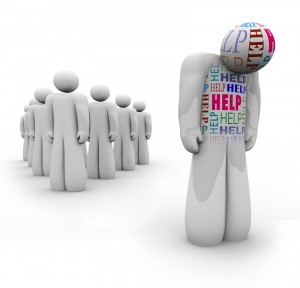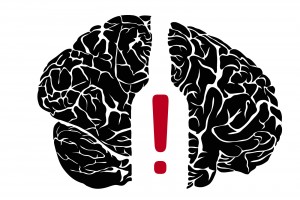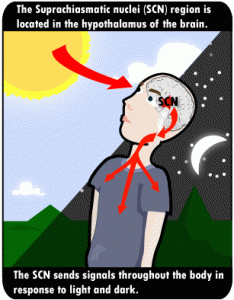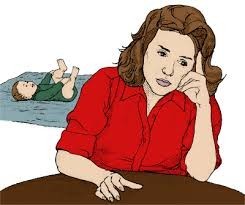About 15.7 million Americans suffer from depression every year, but there remains a hidden cause of depression.
Not everybody responds well to antidepressant medicine. Only 30 to 50% of depressed people respond to antidepressants. There are two blood tests many physicians do not know and therefore fail to order: homocysteine blood levels and 5-methylfolate levels (5-MTHF).
Homocysteine as a hidden cause of depression
In 2004 a research group studied 924 middle-aged men. They noted that those men who fell into the highest third of homocysteine levels had a two-fold higher risk of being depressed than those who fell into the lower third of homocysteine levels. Other studies showed that SAMe, a nutrient that is required to build up mood enhancing neurotransmitters was sadly lacking in depressed people. In addition, folate levels were also found to be low in depressed people.
Having found this association between lack of nutrients and depression offered new opportunities to treat depression. Two studies examined the effect of taking 5-methylfolate on the effect of antidepressants. The result was astounding: in one study 7% of patients taking an antidepressant experienced improvement of their depression when assessed with a standard depression score. However, the same group improved their depression by 19% when 5-methylfolate was given in addition to the antidepressant.
Patients with the most severe depression on antidepressants had a 16% improvement of their depression. Adding 5-methylfolate to the antidepressant caused a 40% overall improvement in these severely depressed people, 24% more than without this simple vitamin supplement.
There is other evidence that patients with depression recover faster in the presence of 5-methylfolate. Moderately depressed patients recovered within 231 days on antidepressants alone, but in only 177 days when 5-methylfolate was present as well. The most severely depressed patients recovered within 150 days with antidepressants alone, but recovered within only 85 days on 5-methylfolate and the antidepressant.
Hidden cause of depression and Alzheimer’s disease
The story is getting more involved. Depression is related to proper balance of neurotransmitters that can be influenced by antidepressants and 5-methylfolate. But new research showed that Alzheimer’s disease (dementia) patients with cognitive decline have elevated homocysteine blood levels. A study in the New England Journal of medicine in 2002 found that after 8 years of observation more than 75% of them were diagnosed with Alzheimer’s disease. When blood homocysteine levels exceeded 14 micromole per liter the risk of Alzheimer’s had doubled compared to those with normal homocysteine levels. The researchers concluded that homocysteine is an important risk factor for the development of Alzheimer’s diseases and dementia, although it is not the only one.
Methylation pathway defects as a hidden cause of depression
40% of the population is defective in one or more genes that control the so-called methylation pathway in each of our cells (Ref. 1). This can slow down the metabolism of brain cells including the synthesis of certain neurotransmitters. At the same time it can cause the rising of homocysteine, which is then a useful marker for methylation defects. Another marker is the 5-methyl folate level, which, when low, indicates a deficiency in methyl donors including 5-methylfolate (5-MTHF).
Mental illness is an area where epigenetic factors play an important role. Depression that responds only partially or not at all to SSRI’s (antidepressants) often responds to L-methylfolate, a simple supplement from the health food store as a supplement. Similar epigenetic approaches are useful to treat psychosis, schizophrenia, bipolar disorder and Alzheimer’s disease.
Other illnesses due to methylation defects
Dr. Rozakis mentioned that 92% of migraine sufferers have a defective methylation pathway involving histamine overproduction and they can be helped with a histamine-restricted diet (Ref.2).
Autism, ADHD (hyperactivity) and learning disabilities are other diseases where methylation pathway defects are present. Physicians should check patients with autism for methylation pathway defects, and appropriate supplements and diet restrictions can help in normalizing the child’s metabolic defects. Mothers should consult with a DAN physician (“defeat autism now”) who is knowledgeable regarding all aspects of autism.
S-adenosylmethionine (SAMe) defects are another type of methylation defect, which associates with certain liver, colon and gastric cancers.
Dr. Rozakis went on to say that methylation defects lead to disbalances between T and B cells of the immune system and are important in autoimmune diseases like lupus or rheumatoid arthritis.
Methylation defects can also cause autoimmune thyroiditis and type 1 diabetes. They can also cause cardiac disease by raising homocysteine levels, which causes dysfunction of the lining of arteries and premature heart attacks.
Epigenetic factors through global methylation defects from vitamin B2, B6 and B12 deficiency can cause many different cancers. Hypomethylation is the most common DNA defect of cancer cells.
With skin diseases it has come to light that atopic dermatitis, eczema, psoriasis, scleroderma and vitiligo are related to methylation.
When we age, certain hormones are gradually missing, which leads to menopause and andropause. This leads to impaired cell function, elevated cholesterol, arthritis, constipation, depression, low sex drive, elevated blood pressure, insomnia, irritable bowel syndrome and fatigue. Replace the missing hormones with bioidentical ones, and symptoms will normalize.
Tests and treatment for hidden cause of depression
It is important for a physician to test patients for homocysteine levels once per year. As we age, we tend to lose some of the methylation pathway enzymes, which can result in an increase of homocysteine in the blood. A normal homocysteine level is less than 7 to 8 micromoles per liter. This is lower than the commonly recommended 15 micromoles per liter.
If the homocysteine level is too high, the treatment consists of methionine containing foods like dairy products and meat. Methionine, an essential amino acid, functions as a donor of methyl groups. The methyl groups normalize the methylation pathway defect and allow the homocysteine level in the blood to decrease. Research studies have been using 1000 to 5000 micrograms of 5-methyl folate daily to reduce homocysteine. Other B vitamins are necessary to reduce homocysteine, like vitamin B2, B6 and B12 in addition to 5-MTHF.
Conclusion
Depression and several other illnesses can be related to methylation pathway defects. This can cause a lack of 5-MTHF resulting in high homocysteine blood levels. It is important that a physician checks his elderly patients for homocysteine blood levels once per year. This will prevent depression, Alzheimer’s disease, migraines and a number of other illnesses.
Once a methylation pathway defect has been identified, it is relatively easy to treat the patient. The treatment consists of a proper methionine rich diet and 5-MTHF supplements as well as other B vitamins as discussed. It can prevent a lot of disability and human suffering.
References
Ref.1: William J. Walsh, PhD: “Nutrient Power. Heal your biochemistry and heal your brain”. Skyhorse Publishing, 2014.
Ref. 2: https://www.askdrray.com/life-expectancy-is-influenced-by-lifestyle/















